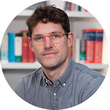- OT
- Science and vision
- Research
- We appear to only just have scratched the surface of understanding glaucoma
We appear to only just have scratched the surface of understanding glaucoma
Optometrist Peter Richardson reports back to OT from the inaugural Advances in Glaucoma Research and Clinical Science meeting in Amsterdam
4 min read

30 October 2019
What is the backstory to the meeting?
Advances in Glaucoma Research and Clinical Science is the first annual glaucoma meeting hosted by Kugler Publications, publishers of The WGA Consensus Series of books. The desire to expand on the books led to the congress, which aimed to be small enough for every delegate to shake hands with every other attendee, but large enough to bring new information to the didactic sessions.Why were you motivated to attend the meeting?
Putting it simply, I felt my knowledge of glaucoma was out of date.In 2001 at an invitation-only meeting, the Trabecular Meshwork Study Club was founded. It was chaired by ophthalmologist, Professor John Samples, from Washington State University and research scientist, Professor Ernst Tamm, from the University of Regensburg. I started my degree course in ophthalmic optics in 1978, the year that Timolol arrived.
In 1981, my pre-reg year began at a practice in Surrey when a shiny new black enamel American Optical non-contact tonometer was installed under the stairs, appearing futuristic yet reassuring. The only controls were a joystick and a firing button – firing being the operative word. It went off like a cannon and whatever it measured it certainly wasn’t the intraocular pressure. Yet, at the end of the examination, a leaflet was handed out: “You have just been tested for glaucoma.” If only life were so simple. Now, nearly 40 years later, there is still no simple test for glaucoma, but I hoped to find more information about the disease and the latest ideas for treatment at the meeting in Amsterdam.
To discover the latest thinking in glaucoma research can surely inform and benefit our ways of advising patients in the future
What topics were covered during the meeting?
The sessions were arranged over three days, with a poster walk-through reflecting the international nature of the event, bringing delegates from the US, Russia, Japan, China, East Africa, Brazil and Europe.Day one focused on the arrival of Rhokinase inhibitors. Now 13 years from concept to market, Duke University offshoot, Aerie Pharmaceuticals, brought Netarsudil to the frontline in drug treatment of glaucoma. The first new drug class in 21 years, rhokinase inhibitors are the only molecules to work on the diseased tissue of glaucoma, the trabecular meshwork, relaxing the actin cytoskeleton to allow increased outflow through the conventional route of collector channels into Schlemm’s canal.
Day two revolved around the basic science of aqueous flow, misfolded proteins, perfusion pressure and intracranial pressure.
Day three looked at surgery, fixed combination therapies and compliance problems.
What were your speaker highlights?
Debate is crucial to the success of a small meeting like this and there was plenty of it when discussing minimally invasive glaucoma surgery (MIGS), shunts and stents, and cyclodestruction. The last speaker, Dr Richard Lee, from the University of Miami, left everyone thinking about the future by talking about the possibility of neurorejuvenation, not neuroregeneration.The final talk on day two was delivered by Dr Hans Lemij from Rotterdam Eye Hospital, who offered valuable insight for optometrists. He looked at the clinical evaluation of the disease, stressing how, in the early stages, visual field testing is not sensitive enough to detect subtle changes and requires a more careful observation of the optic nerve head. In established disease visual field testing and objective optic nerve head analysis are both essential to monitor glaucoma progression, but in the end stages are not as effective as conventional examination of the discs by an experienced observer.
Will you be back next year?
As I left the meeting, I realised how in 40 years we appear to have just scratched the surface of understanding glaucoma and how it relates to other conditions such as macular degeneration and Alzheimer’s disease. As Dr Lemij said: “There is no single definition of glaucoma.”While this meeting may seem too detailed and intense for everyday optometric practice in the UK, to discover the latest thinking in glaucoma research can surely inform and benefit our ways of advising patients in the future.
I got a lot out of the conference. So, if anyone is considering going next year, I’ll see you there.
Peter Richardson is a locum optometrist based in London. The Advances in Glaucoma Research and Clinical Science meeting took place in Amsterdam on 26–28 September 2019. For more information, visit its website.
Image credit: Kugler Publications


Comments (0)
You must be logged in to join the discussion. Log in